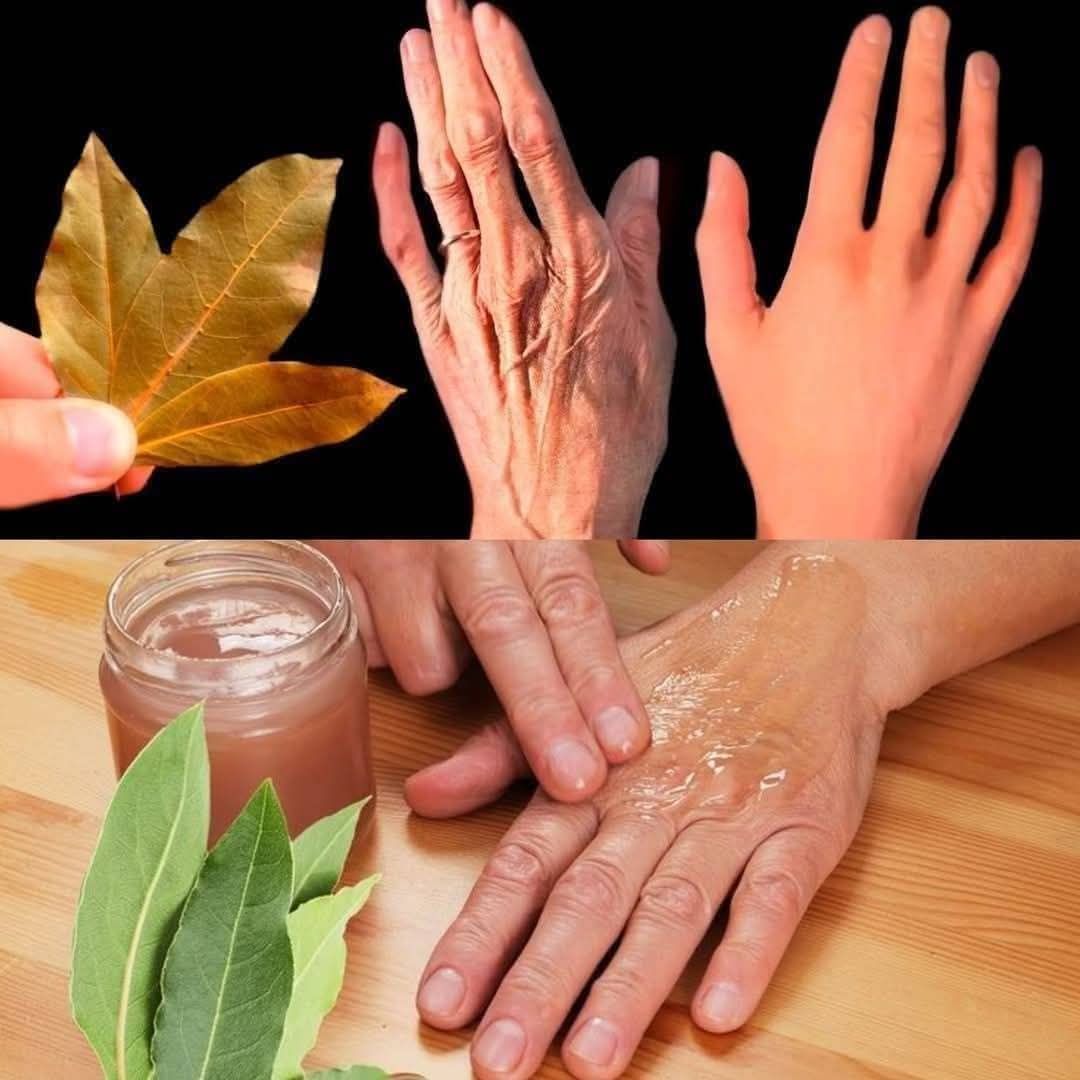Our hands tell the story of our lives. They work tirelessly every day, yet they’re often the most neglected part of our skincare routine. Exposure to sun, harsh soaps, and environmental stressors can leave hands looking aged, dry, and wrinkled long before the rest of our body shows signs of aging. But what if there was a simple, natural solution hiding in your kitchen cupboard?
Bay leaves, those aromatic herbs we use in cooking, hold remarkable properties for skin rejuvenation. This ancient remedy has been rediscovered by those seeking natural alternatives to expensive hand creams and anti-aging treatments. The results speak for themselves: softer, smoother, more youthful-looking hands.
Why Bay Leaves for Hand Care?
Bay leaves are far more than a culinary herb. These fragrant leaves contain a powerhouse of compounds that benefit the skin in multiple ways. Rich in vitamins A and C, along with minerals like calcium, iron, and magnesium, bay leaves offer comprehensive nourishment for aging or damaged skin.
The leaves contain eugenol, a natural compound with strong anti-inflammatory and antioxidant properties. This helps combat the free radicals that accelerate skin aging, while also soothing irritated or inflamed skin. Bay leaves also possess antimicrobial properties that can help keep hands clean and protected from harmful bacteria.
Perhaps most impressively, bay leaves contain compounds that can help stimulate collagen production. Collagen is the protein responsible for keeping skin firm, plump, and youthful-looking. As we age, collagen production naturally decreases, leading to wrinkles and sagging skin. By boosting collagen, bay leaf treatments can help restore a more youthful appearance to hands.
The Science Behind Aging Hands
Understanding why hands age faster than other parts of the body helps us appreciate why targeted treatments are so important. The skin on our hands is thinner than facial skin and contains fewer oil glands, making it more susceptible to dryness and damage. Hands are also exposed to more environmental stressors than almost any other body part.
Every time we wash our hands, apply sanitizer, or expose them to cleaning products, we strip away natural oils. Sun exposure without adequate protection leads to age spots, wrinkles, and loss of elasticity. Add to this the constant movement and use of our hands, and it’s no wonder they show signs of aging so quickly.
The good news is that hand skin is remarkably responsive to proper care. With the right natural treatments, hands can regain much of their youthful appearance, becoming softer, smoother, and more evenly toned.
How to Make Bay Leaf Hand Treatment
Creating your own bay leaf hand treatment is surprisingly simple and requires just a few natural ingredients. This recipe has been passed down through generations and refined for maximum effectiveness.
Ingredients:
- 10-15 dried bay leaves
- 2 cups of water
- 2 tablespoons of coconut oil or olive oil
- 1 tablespoon of honey (optional, for extra moisture)
- A few drops of vitamin E oil (optional, for enhanced anti-aging benefits)
Preparation Method:
Begin by creating a concentrated bay leaf infusion. Place the bay leaves in a pot with the water and bring to a boil. Once boiling, reduce the heat and let it simmer for 15-20 minutes. The water should turn a golden-brown color and release a strong, aromatic scent. This indicates that the beneficial compounds from the leaves have been extracted into the water.
Remove from heat and let the infusion cool completely. Strain out the leaves, keeping only the liquid. This infusion forms the base of your hand treatment.
For a cream treatment, mix three tablespoons of the bay leaf infusion with the coconut or olive oil. Add honey if desired for extra moisturizing benefits. Blend well until you achieve a smooth, creamy consistency. If you have vitamin E oil, add a few drops at this stage. Vitamin E enhances the anti-aging properties and helps preserve the mixture.
Store your bay leaf hand cream in a clean, airtight jar. It will keep in the refrigerator for up to two weeks.
Application Techniques for Best Results
The way you apply your bay leaf treatment can significantly impact its effectiveness. Proper application ensures maximum absorption and benefit.
Start with clean, dry hands. Gently warm a small amount of the cream between your palms. This helps the oils become more fluid and easier to absorb.
Apply the treatment generously to both hands, paying special attention to problem areas. The backs of hands typically show the most signs of aging, so focus extra attention there. Don’t forget your fingers, knuckles, and cuticles – these areas also benefit greatly from nourishment.
Use upward, circular motions as you massage the treatment into your skin. This massage action not only helps absorption but also stimulates blood circulation, bringing oxygen and nutrients to the skin cells. Spend at least two to three minutes massaging each hand.
For intensive treatment, apply the cream before bed and wear cotton gloves overnight. This allows the beneficial compounds to penetrate deeply while you sleep, maximizing their effectiveness.
Quick Bay Leaf Hand Soak
If you prefer a liquid treatment, the bay leaf infusion can be used as a rejuvenating hand soak. This method is perfect when you have a bit more time and want to pamper your hands.
Prepare the bay leaf infusion as described above, but use warm rather than cold water for soaking. Once the infusion has cooled to a comfortable temperature, pour it into a bowl large enough for both hands.
Soak your hands for 15-20 minutes, gently massaging and flexing your fingers occasionally. This allows the bay leaf compounds to penetrate the skin while also soothing any joint discomfort.
After soaking, pat your hands dry and apply a natural moisturizer to seal in the benefits. Your hands will feel incredibly soft and look noticeably more radiant.
Additional Natural Ingredients to Boost Results
ADVERTISEMENT
ADVERTISEMENT
